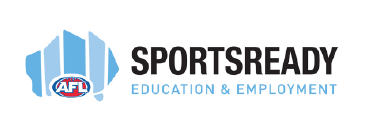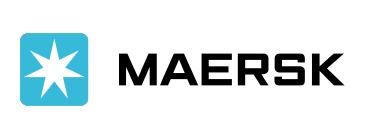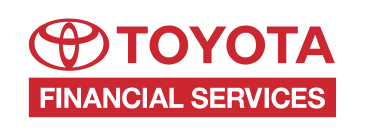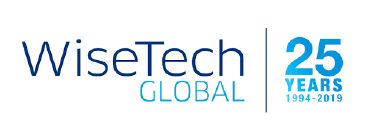Onsite Manual Handling Training
Manual handling training 1.5 hours – the office worker
Who: Manual handling training Australia – Companies looking to create and deliver industry specific manual handling training to workers in their industry. This manual handling training course is designed for the worker who completes manual tasks on a daily basis.
Why: Manual handling training specific to your industry enables the worker to practice common manual handling tasks specific to their role. A review of the workplace prior to the manual handling training allows us to design a tailored manual handling course that meets your company needs. Theoretical and practical training is delivered specifically to your industry.
Manual Handling Training Session Duration: 1.5 hours
Manual Handling Trainers: Qualified Health Professionals – Osteopath, Physiotherapist, Exercise Physiologist, Occupational Therapist
Training Objectives:
- Briefly define manual handling and the need for training
- Discuss the research findings surrounding manual handling training, including what training should include
- Discuss common manual handling tasks and the related issues relevant to the workplace
- Explain in simple terms the basic anatomy and biomechanics of the body and how manual tasks injuries occur
- Discuss worker’s legislative duties, participation and consultation
- Define manual tasks risk factors – what is a hazardous manual task?
- Educate workers on simple risk assessment strategies including the hierarchy of control
- Educate workers on incorrect movement patterns, the semi-squat and leg lift techniques
- Educate workers on twisting and turning, pushing and pulling and team lifting
- Introduce self-application of the principles of hazard identification, risk assessment and control measures for common manual handling tasks
- Step by step practice of key high risk tasks with consultation on any risk reduction improvements discussed
- Use of trolleys or other manual handling equipment
- Application of any control measures to common manual handling tasks within the workplace
- Workers to know the limits of their competence and identify when it is unsafe to continue with a task and when professional advice/guidance should be sought
- Answer any further questions related to manual tasks in the workplace
Customised manual handling training 2.5-3 hours – workers who complete manual handling tasks frequently
Who: Manual handling training Australia – Companies looking to create and deliver industry specific manual handling training to workers in their industry. This manual handling training course is designed for the worker who completes manual tasks on a daily basis.
Why: Manual handling training specific to your industry enables the worker to practice common manual handling tasks specific to their role. A review of the workplace prior to the manual handling training allows us to design a tailored manual handling course that meets your company needs. Theoretical and practical training is delivered specifically to your industry.
About: Our customised manual handling training involves a 4 step process:
- Phone consultation and site visit to observation of the current manual handling tasks performed. Consultation with key stakeholders to discuss current manual handling practices. Please note: CWHA will take photos and videos of manual tasks performed for learning and teaching purposes.
- Manual handling training program design – CWHA will then create a customised manual handling package specific to your workplace tasks, hazards, risk assessment tools and control measures.
- Manual handling training sessions 2.5- 3 hours onsite within your workplace. Groups of up to 12-15 workers can be trained in each session.
- Step-by-step practice of common manual handling tasks in the workplac
Manual Handling Site Visit Duration: 1 hr – 1/2 day
Manual Handling Training Session Duration: 2.5 – 3 hours (90 minutes theory, 60-90 minutes practical)
Manual Handling Trainers: Qualified Health Professionals – Osteopath, Physiotherapist, Exercise Physiologist, Occupational Therapist
Requirements: Site visit, photo and video footage of current manual tasks performed, consultation with key stakeholders when undertaking the site visit. Training workshops can be delivered in a training room/meeting room at your site or in the work area if required.
Training Objectives:
- Briefly define manual handling and the need for training
- Discuss the research findings surrounding manual handling training, including what training should include
- Discuss common manual handling tasks and the related issues relevant to the workplace
- Explain in simple terms the basic anatomy and biomechanics of the body and how manual tasks injuries occur
- Define cumulative strain and relate this to one’s work roles
- Discuss worker’s legislative duties, participation and consultation
- Define manual tasks risk factors – what is a hazardous manual task?
- Educate workers on simple risk assessment strategies including the hierarchy of control
- Educate workers on incorrect movement patterns, the semi-squat and leg lift techniques
- Educate workers on twisting and turning, pushing and pulling and team lifting
- Introduce self-application of the principles of hazard identification, risk assessment and control measures for common manual handling tasks
- Step by step practice of key high risk tasks with consultation on any risk reduction improvements discussed
- Use of trolleys, cranes or lifters if appropriate
- Application of any control measures to common manual handling tasks within the workplace
- Workers to know the limits of their competence and identify when it is unsafe to continue with a task and when professional advice/guidance should be sought
- Answer any further questions related to manual tasks in the workplace
Combined Office Workstation Ergonomics And Manual Handling Training Workshops
Who: Companies who have a workforce where their workers are required to a combination of seated computer based work as well manual handling.
About: Our office workstation ergonomics and manual handling training involves a 2 step process:
- Phone consultation to discuss your current office workstation environment/use and manual tasks performed and issues within the workplace. Emailing of photos of your key manual tasks and office workstation photos so that a customised course can be created.
- Ergonomics & Manual handling training sessions 2 hours onsite within your workplace. Groups of up to 12-15 workers can be trained in each session.
Why: Workers who are required to perform office based work and manual handling are presented with a range of different hazards and issues within each specific work area. Education and training of workers in the hazards and risks associated with office workstation ergonomics and manual handling with training focusing on educating workers about their posture at their workstation and manual handling behaviours.
Phone Consultation & Emailing: 30-60 minutes
Manual Handling Training Session Duration: 2 hours (45 minutes – office workstation ergonomics, 1.25 hours manual handling theory and practical)
Office workstation and Manual Handling Trainers: Qualified Health Professionals – Osteopath, Physiotherapist, Exercise Physiologist, Occupational Therapist
Requirements: Site visit, photo and video footage of current manual tasks performed, consultation with key stakeholders when undertaking the site visit. Training workshops can be delivered in a training room/meeting room at your site or in the work area if required.
Office Workstation Training Objectives:
- Educated workers on the hazards and risks associated with seated office computer work
- Educate workers on best practice workstation set up (chair, desk, computer accessories)
- Educate workers on seated postures and how to minimise musculoskeletal strains and sprains in the workplace.
Manual Handling Training Objectives:
- Briefly define manual handling and the need for training
- Discuss the research findings surrounding manual handling training, including what training should include
- Discuss common manual handling tasks and the related issues relevant to the workplace
- Explain in simple terms the basic anatomy and biomechanics of the body and how manual tasks injuries occur
- Define cumulative strain and relate this to one’s work roles
- Discuss worker’s legislative duties, participation and consultation
- Define manual tasks risk factors – what is a hazardous manual task?
- Educate workers on simple risk assessment strategies including the hierarchy of control
- Educate workers on incorrect movement patterns, the semi-squat and leg lift techniques
- Educate workers on twisting and turning, pushing and pulling and team lifting
- Introduce self-application of the principles of hazard identification, risk assessment and control measures for common manual handling tasks
- Workers to know the limits of their competence and identify when it is unsafe to continue with a task and when professional advice/guidance should be sought
- Answer any further questions related to manual tasks in the workplace
Manual Handling Hazard Identification & Risk Assessment Services
Have you conducted a workplace hazard identification check and manual handling risk assessment of specific manual tasks? All workplaces should have an OHS/WHS management system in place so that can identify key hazardous manual tasks within the workplace and then perform a risk assessment of these manual tasks to help guide on the best method to manage this. To find out more information about Corporate Work Health Australia services in these areas, please click on the link below
Corporate Work Health Australia’s mission is simple:
“FEWER Injuries, QUICKER Recoveries, HEALTHIER Bodies, IMPROVED Staff morale, REDUCED Absenteeism, INCREASED Productivity, REAL Savings….”
Customisation is Key!
Benefits to Employers
- Control and minimise the costs of workplace injuries from manual handling (tasks)
- Reductions in back injuries, shoulder injuries and repetitive injuries
- Comply with workplace health and safety legislation to provide a safe workplace
- Improve worker's understanding of the risk assessment and risk control processes
- Increase the participative approach to reducing manual tasks risk factors and workplace safety culture
- Decreased absenteeism & increased productivity
- Reduced exposure to health and safety risk
Excellence in Manual Handling Training
Easy to Understand

Wade Brennan
Physiotherapist, WHS Consultant & Trainer
B App. Sc (phty), Cert IV & Dip WHS, Cert IV TAE
Member Human Factors & Ergonomics Society of Australia (HFESA)
Member Safety Institute of Australia (SIA)
Committee Member Australian Physiotherapy Association Qld Occupational Health Group
“Having to treat the damaging effects of poor technique and posture, and high risk work on the spine on a daily basis I am often asked why we didn’t learn this in the past?
Our fun, interactive courses go a long way to improving our clients understanding of the spine, why training and understanding risk factors is so important and preventing the epidemic that is low back pain in 2020.”

Heath Williams
Osteopath, WHS Consultant & Trainer
B.Sci M.O. Grad.Cert.Tert.Ed, Cert IV & Dip WHS, Cert IV TAE
Member Human Factors & Ergonomics Society of Australia (HFESA)
Member Safety Institute of Australia (SIA)
Committee Member Australian Osteopathic Association Victorian Occupational Health Group
“The delegates we train really enjoy learning about what happens to the body when you continuously stress the tissues using poor technique.
As they discover how valuable this information becomes to everyday life they become very involved in active discussions in the course. They can then really appreciate what good manual handling is all about. This really is a topic that every one of us should understand better and begin implementing on a daily basis.”




















